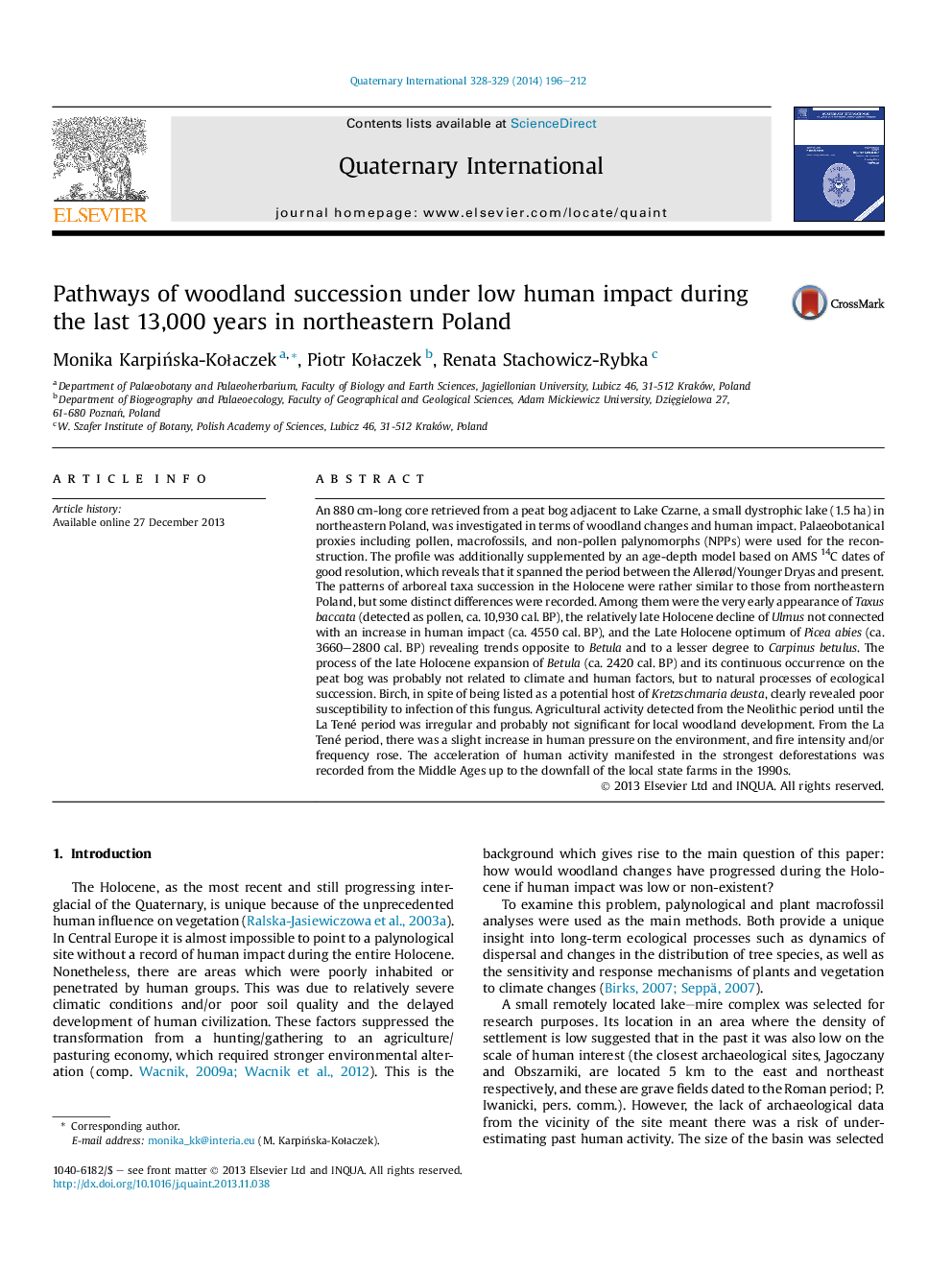| کد مقاله | کد نشریه | سال انتشار | مقاله انگلیسی | نسخه تمام متن |
|---|---|---|---|---|
| 7452460 | 1484165 | 2014 | 17 صفحه PDF | دانلود رایگان |
عنوان انگلیسی مقاله ISI
Pathways of woodland succession under low human impact during the last 13,000 years in northeastern Poland
ترجمه فارسی عنوان
پیروی از جانوران جنگل تحت تاثیر انسان کم در طول 13،000 سال گذشته در شمال شرقی لهستان
دانلود مقاله + سفارش ترجمه
دانلود مقاله ISI انگلیسی
رایگان برای ایرانیان
موضوعات مرتبط
مهندسی و علوم پایه
علوم زمین و سیارات
زمین شناسی
چکیده انگلیسی
An 880 cm-long core retrieved from a peat bog adjacent to Lake Czarne, a small dystrophic lake (1.5 ha) in northeastern Poland, was investigated in terms of woodland changes and human impact. Palaeobotanical proxies including pollen, macrofossils, and non-pollen palynomorphs (NPPs) were used for the reconstruction. The profile was additionally supplemented by an age-depth model based on AMS 14C dates of good resolution, which reveals that it spanned the period between the Allerød/Younger Dryas and present. The patterns of arboreal taxa succession in the Holocene were rather similar to those from northeastern Poland, but some distinct differences were recorded. Among them were the very early appearance of Taxus baccata (detected as pollen, ca. 10,930 cal. BP), the relatively late Holocene decline of Ulmus not connected with an increase in human impact (ca. 4550 cal. BP), and the Late Holocene optimum of Picea abies (ca. 3660-2800 cal. BP) revealing trends opposite to Betula and to a lesser degree to Carpinus betulus. The process of the late Holocene expansion of Betula (ca. 2420 cal. BP) and its continuous occurrence on the peat bog was probably not related to climate and human factors, but to natural processes of ecological succession. Birch, in spite of being listed as a potential host of Kretzschmaria deusta, clearly revealed poor susceptibility to infection of this fungus. Agricultural activity detected from the Neolithic period until the La Tené period was irregular and probably not significant for local woodland development. From the La Tené period, there was a slight increase in human pressure on the environment, and fire intensity and/or frequency rose. The acceleration of human activity manifested in the strongest deforestations was recorded from the Middle Ages up to the downfall of the local state farms in the 1990s.
ناشر
Database: Elsevier - ScienceDirect (ساینس دایرکت)
Journal: Quaternary International - Volumes 328â329, 10 April 2014, Pages 196-212
Journal: Quaternary International - Volumes 328â329, 10 April 2014, Pages 196-212
نویسندگان
Monika KarpiÅska-KoÅaczek, Piotr KoÅaczek, Renata Stachowicz-Rybka,
